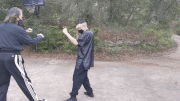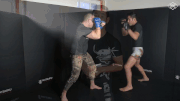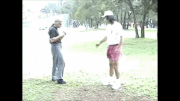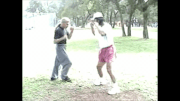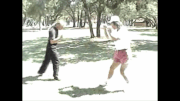Just realized I never actually answered. Keep in mind this is not from a TKD perspective, but someone who did kempo, and my understanding is that what you call one step are very similar to our SD combination #s.
Essentially, there has to be something that the combination teaches. This does not have to be directly a fighting application, nor does the combination have to be practical.
An example is one where you do a left hand knife hand block, followed by a jumping scissor kick. I can't think of a way to use that in an actual fight, and there's no real set up taught. Despite that, I still think it's a useful one. It provides a very concrete time to learn the move, and encourages practicing-which helps develop leg strength and 'hops' for some of the more complicated things that they learn in the next few belts. It's essentially a bit of conditioning built into practicing combinations (which are practiced from beginning to end regardless of rank; there is no 'info dump' that occurs. If there was, this would be much less useful).
Other uses are more martial-learning how movements can flow together, or learning a way to set up a throw. If there is not a use for the combination, or if there is a lot of superfluous moves that are unrelated to the main purpose, that's a bad one to me.
Below is off-topic, but related. Feel free to skip reading it if you're not interested.
A useful exercise IMO is to find the main purpose behind each combination. Once you do that, you have something to focus on when learning, practicing and teaching it. And from my experience, at least in my form of kempo, there is at least one main purpose behind each of them. I've also stripped some to what I find to be the principle and just practice that, or see different ways, for my own practice.
An example for that, is combination 1. The combination is essentially parry with a backstep to a cat stance, then lunge forward wrapping the arm, throwing some strikes to off balance, grab their throat then throw an o soto gari, and throw more strikes. Depending on who's teaching, the second to last strike is done during the takedown, or after. My viewpoint of the technique is that it's teaching you two things: The first is to distance parry, and the second is how to invade space and throw before they can react. As a result, when I practice it, I'll experiment with different ways to do the distance parry-sometimes I'll do a step backwith the back foot and use that as a spring. Sometimes I go fully into the cat stance, sometimes I keep my feet still and just weave my head back. Then I'll also often practice the invading-I'll imagine (or have a partner) do different strikes, and rather than doing the parry-catstance, I just practice ways to get on their inside and position for the throw. So if they come with a hook to my face, I weave under, do the step in and wrap the arm, and continue the remaining of the combination. In my mind, all of this is still just practicing combination 1.

